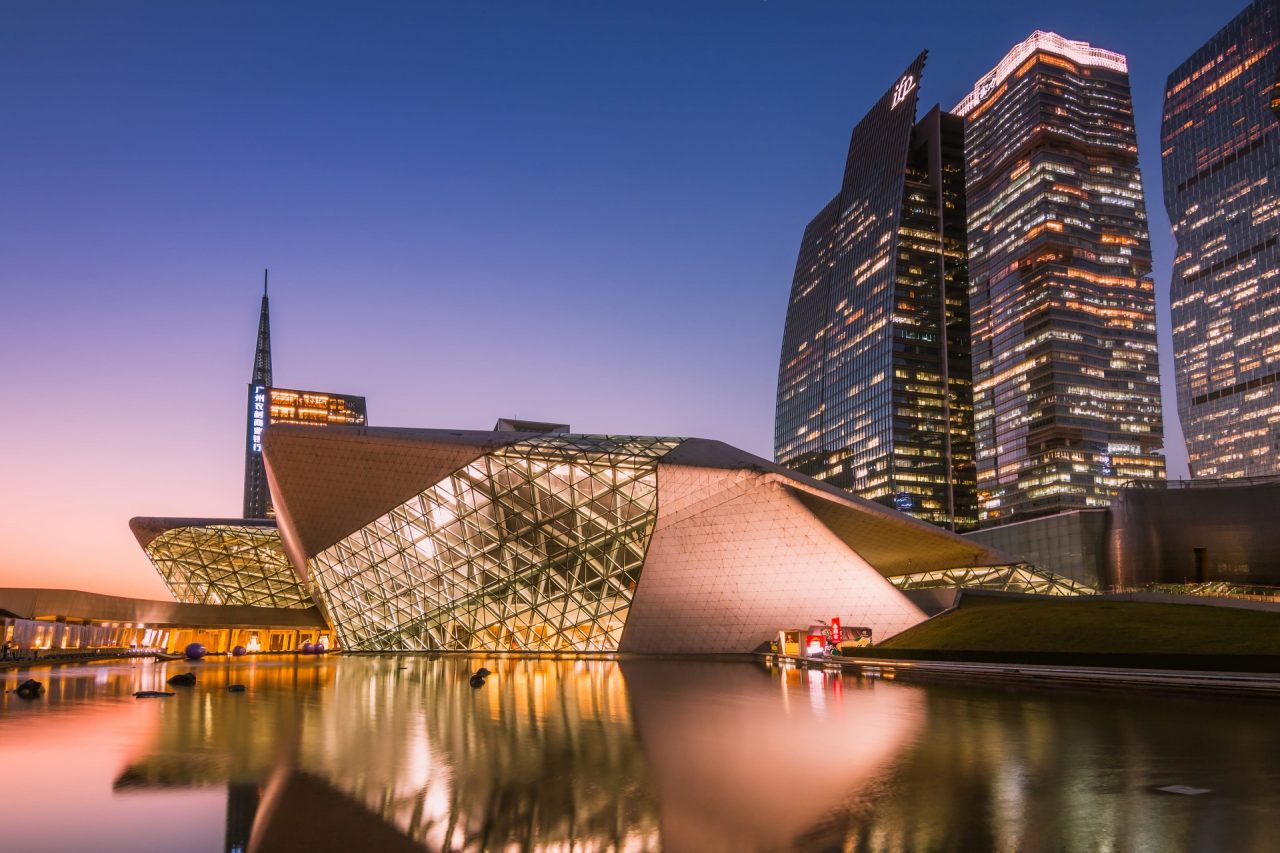More than “just” the country’s economic engine; not just one of China’s locomotives; not just the millions of people that power one of the world’s richest regions. Guangzhou, China’s third largest city, 120 kilometers (75 miles) from Hong Kong, is all that and more.
It sits on the Pearl River Delta, China’s historic gateway to the world, in a region of over 60 million inhabitants. It is no coincidence, then, that the Guangzhou Opera House rises on the banks of the Pearl River, mixing culture, architecture, art and beauty together in a perfect calling card for a region that is a global leader.
This work of architecture reflects the strengths and technologies of this city, becoming the first project designed by Zaha Hadid Architects in China.
Guangzhou Opera House: Zaha Hadid’s first project in China
The municipality of Guangzhou announced its plans in 2002 to build an Opera House that would be unique not only for its architectural features but also for its innovation. It commissioned Zaha Hadid Architects with the task of creating a work that would be perfectly integrated aesthetically with the surrounding environment.
The architect’s response was not long in coming. Zaha Hadid designed the two main buildings of the Opera to resemble two huge pebbles, with a sinuous shape as if smoothed by the waters of the Pearl River. Faithful to this idea, the Opera House blends perfectly with the surrounding environment, allowing visitors to walk around its two edifices: a theater capable of accommodating up to 1,800 spectators, and a second multifunctional structure capable of holding over 400 people.
The work was to have been completed in 2010, but the inauguration was postponed to February 2011 after a fire that broke out on the site.

Guangzhou Opera House: interiors and features
In addition to the aesthetic beauty, the real challenge for the construction of this incredible work was building its interior, set in a complex structure built with 10,000 tons of steel.
Inside, the structure is characterized by large overhangs and continuous changes in height achieved through balconies and cantilevered stairs that lead visitors along an architectural promenade. On the outside, instead, the two “pebbles” are both covered with granite and emerge from a common foundation made of concrete, glass surfaces, turf and reflecting pools of water.
The overall sense, once again, is that of walking along a riverbed. A river that flows through one of the richest economic regions in the world.
The Guangzhou Opera House and its surroundings
“Like pebbles smoothed by the flow of water,” reads the statement by Zaha Hadid Architects, “The Opera House is at the heart of Guangzhou’s cultural development. Its unique twin-boulder design enhances the city by opening it to the Pearl River, unifying the adjacent cultural buildings with the towers of international finance in Guangzhou’s Zhujiang new town.”
Looking at it from the outside, the work is in fact perfectly integrated with the surrounding environment so as to become a symbol of Guangzhou, a megalopolis of 11 million inhabitants located in a region that includes cities such as Shenzen, Hong Kong and Macao.
The Greater Bay Area is a region of 56,000 square kilometers (21,600 square miles), which produces a GDP of $1.5 trillion dollars, 9.1% of China’s total. Its economic strength is also inspired by the dense network of infrastructure that makes connections between the megacities easy and fast. From the Hong Kong-Zhuhai-Macao Bridge, the 55-kilometer-long (34-mile) bridge connecting Hong Kong to Macao, to the high-speed railway between Kowloon, Shenzhen and Guangzhou, the Chinese government has been investing hundreds of billions of dollars for years to accelerate the region’s development.
According to official statistics, 1.6 billion passengers travel every year on high-speed train lines, along with 2.7 billion tons of freight.
Within this enormous urban conglomerate, which has become an engine of the Chinese economy, the Guangzhou Opera House has carved out its own space, a pearl of architecture delicately set among the dense forest of skyscrapers on which the waters of the river are reflected.

